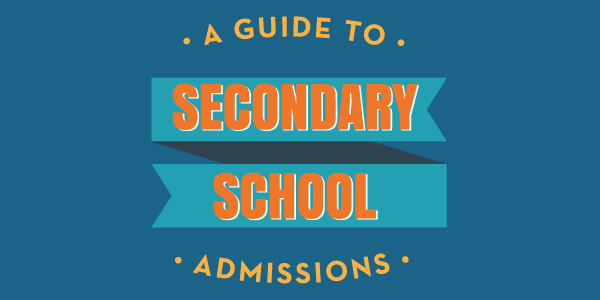Choosing a secondary school

Choosing a secondary school is a daunting task. As the numbers of pupils increase and the amount of places become more and more sparse, parents can begin to feel as though their options are limited.
From when to start looking at schools, what to look for at open days and how the application process works, this comprehensive guide compiles everything a parent needs to consider when choosing a secondary school for their child.
What is the Merseyside landscape in terms of choices available for parents?
The Merseyside landscape offers a broad range of schools available to children. From academies to faith schools, single sex to mixed schools, parents have a lot of decisions to make when deciding what kind of school is best for their child.
If a child is comfortable with sitting an entrance exam, there is one grammar school in Liverpool that offers 180 places and six grammar schools in Wirral offering a total of 985 places.
The growing range of school specialisms means that parents can tailor their child’s talents to the strengths of a particular school, these specialisms range from music, business, languages, sports, science and many more.
The issue with the Merseyside landscape is that while there are many schools on offer, increasingly selective admissions criteria can limit the options available. Grammar schools only appoint places to those who pass an entrance exam and faith schools are selective based on religion. Some schools can even place a percentage of students based on their success in the school’s specialism.
When should parents begin choosing a school?
People may say that parents should start looking at schools from as early as choosing the location of the family home and considering the schools in the area. As many schools take location into consideration during the admissions process this factor can play a major part in choosing a secondary school.
Ideally, parents will begin researching secondary schools when their child begins Year 5. With open days taking place normally in September, October, January and July, beginning the research early will ensure that parents have the opportunity to visit all of the schools they are interested in.
It is so important to look at all of the options available, research five schools and narrow this down to three. Consider a ‘wild card’ and visit the open day of a school that may not have been considered in the past as parents could find that it is a great option for their child.
Remember that some schools admissions processes involve an assessment day which can take place before the government application deadline. This means that some selective schools ask for application forms to be sent off in the first week of September. Parents who wait until their child has started Year 6 may find themselves pushed for time if they’ve yet to consider secondary school options.
What should parents be looking for?
All parents want the best for their child, but if the highest ranked secondary school is not in their catchment area, that doesn’t mean their child has been cheated out of an education.
It is easy to listen to talk at the school gate and make judgments about which schools to apply to on the basis of these conversations. Yet what may be the best option for one child is not necessarily best for another. Children who are musically gifted may suit a different school to one who is talented at sports. Weigh up a child’s talents, abilities or interests and measure these against what each school has to offer.
Most importantly, parents should be realistic about the options available to their child. If applying to a school that is far away consider the commute and decide whether this is still a viable option. Also, it is essential that a child fits with a schools entry criteria and parents shouldn’t waste an option on their preference form or raise a child’s hopes on gaining a place at a school they have little hope of attending.
What should be focused on during an open day?
It is important to look at how teachers interact not only with parents, but also with current and prospective pupils. Strong relationships between teachers and pupils reveals a lot about a school’s sense of community. Inspirational and dedicated teachers are vital to the success of a school.
Be sure to prepare questions to ask both teachers and pupils. Parents should make sure that the tour of school includes areas that are of interest to their child such as sports facilities, drama studios or science labs. If certain areas of the school are avoided on a tour be sure to question why.
Parents should focus on their child if they decide to take them with them. Remember that this a huge transition and if a child is excited about attending a particular school this can make this transition so much easier.
Listening to the headteacher’s speech presents parents with the opportunity to gain an impression of the school’s leadership team.
They should consider how well the headteacher articulates the school’s vision and values. From this parents can get a real sense of the leadership team’s enthusiasm and passion, as well as a feel for the school’s academic mission.
What are the values of school specialisms?
School specialisms are specific fields that a school excels in. Specialisms include sport, science, languages, music and even sustainability. This means that parents can tailor their children’s strengths or interests to a school that reflects them.
Schools specialising in languages may offer exciting exchange opportunities while a science specialist will have top of the range laboratories.
A child who loves drama will benefit from a school that puts on big yearly productions and has an after school drama club.
Some specialist schools select a percentage of students based on their aptitude for the specialist subject. For example, a language specialist may assess prospective pupils for a high aptitude for learning a new language.
How does your primary school choice affect secondary applications?
Some secondary schools offer priority to pupils making the transition from a feeder school.
Not all primary schools are feeder schools and this could be something that parents consider when selecting a primary school for their child.
An important thing to note is that attending a feeder school does not guarantee a secondary place. Some factors such as religion or having a sibling in the school can rank above feeder schools in the selection process. For example, a child attending a feeder to a faith school will be of lower preference if they do not follow the associated faith.
If a parent is considering a secondary school and their child does not attend an associated feeder school, they should consider their chances of meeting the entrance requirements against children who do attend a feeder school in the area.
Who decides on the admissions policy?
Admissions policies are decided either by the local education authority (LEA) or the school’s governing body.
Selective schools such as grammar schools are able to select pupils based on ability with places allocated to those scoring highest in an entrance assessment or 11+.
The LEA decides the admissions process for community and comprehensive schools, these schools do not select their intake on the basis of academic achievement.
Voluntary aided schools are state-funded schools where a foundation or trust, usually a religious organisation, has significant influence in the running of the school. The governing body decides on the admissions policy which means that the policy differs according to each school. Faith schools base admissions on affiliation with the associated religion but some will reserve ‘community’ places for children from the local area.
Academies also have admissions policies that are decided by the school’s governing body. Each academy must be researched individually as admissions policies will differ for each school.
How does the application process work?
In September 2016, all Year 6 pupils will receive an admissions booklet from their respective borough. This booklet will outline the application process, the schools in the borough and their up to date admissions policies including the number of places on offer.
Applications can be made online or through paper forms to the local authority. Parents must apply to their own local authority, even if applying to a school in a different borough.
Once parents have narrowed down their three choices, they must list these in order of preference on the application form. The order of preferences is very important as in the event that an applicant receives an offer from more than one school, the place will be allocated at the school placed as highest preference.
However, the order of preference does not affect the chances of a child receiving a place.
All applicants are weighed up against the entry criteria equally, regardless of whether the school has been listed first or third.
Some schools will also ask for supplementary forms to be sent to them separately, parents must ensure that any additional forms are completed and sent to the school.
Does it matter what borough you live in if you want to apply to a school in a different borough?
Parents can apply to schools in any borough but they will apply via their own local authority. For example, if the family home is in Knowsley but a parent wishes to apply to a school in Liverpool, they will do this through the Knowsley local education authority.
If parents find that the options within their borough are limited or often oversubscribed, it can be worthwhile to look at the options available outside of their borough. In some cases parents may discover that although in a different borough, their address may still be within another school’s catchment area.
What are some of the criteria schools follow in their selection process?
Information on schools admissions policies can be found on school websites and in the government’s admissions booklet.
Schools can decide on pupils based on catchment area, religion, having a sibling in the school, the results of an assessment day or entrance exam and their attendance at a feeder school.
Parents should remember that catchment areas are not static and depending on the number of applicants each year these areas can either increase or decrease. This means that just because in previous years a school has accepted pupils from a four-mile radius does not mean the same will apply the following year.
How are catchment areas measured?
Catchment areas are measured in two ways. Some schools measure their catchment area based on the distance of the school from the prospective pupil’s home in a straight line. Other schools measure distance by the most suitable route as generated by a computer. Details on which system each school uses is available in the schools admissions policy.
What is banding?
Banding is a system used by some academies to decide on their intake. Based on an assessment, applicants are divided into several bands.
The school will take a set percentage of applicants from each band. This system aims to ensure that the school receives an intake of students with a range of abilities.
How have academies changed things?
When a school becomes an academy it is no longer under the control of the local education authority. This means that the day to day running of the school, including entry criteria, is decided by the board of governors.
If a parent is considering a school for their child that has recently converted to an academy they should check the entry requirements carefully as they have might have changed from previous years.
Due to an influx of funding, newly converted academies will tend to have new facilities and enhanced buildings. While this is great, if a school has previously been failing, parents should look at other changes that have been made in the conversion process including the leadership team and school mission. Be sure that the school is actively solving the issues previously faced, not just masking them with a brand new building.
How much involvement should a child have in the process?
It is important to take a child’s considerations into account when choosing a school, however a child’s reasons for choosing a secondary school can be very different from a parent’s.
While children may be concerned about attending the same school as their friends, they must remember that they will change over the next five or more years and new friendships will blossom in this time.
Ensure that the child is involved in asking questions at open days and that their favourite subjects are covered in school tours.
However, it’s not a good idea to take children to open days of schools if they fail to meet the admissions criteria. For a similar reason, parents should take care not to create a negative impression about any schools that are being considered. Creating a negative impression about a particular school could result in further upset if the child is not accepted at their first choice.
Should/can my primary school help me with the process?
Primary schools can help with the understanding of the application process and most teachers will be happy to answer any questions regarding this.
However, a child’s primary school has no involvement in a secondary school admissions process as this decision remains with the secondary school. Primary schools are not responsible for a child’s admission into secondary school.
For this reason, many primary school teachers may avoid recommending schools to parents to avoid being made accountable if the child does not gain a place.
Is there any information about this year’s admissions that may help parents make their choice for next year?
Finalised admissions criteria is not available until the secondary school admissions booklet is released in September 2016.
Last year’s booklets are available online from the relevant borough’s council. These can be used to get a general idea about what schools admissions criteria may look like. However, this information should not be taken as final as criteria could change for this year.
Information regarding this year’s admissions may be available earlier at schools holding open days this summer.




